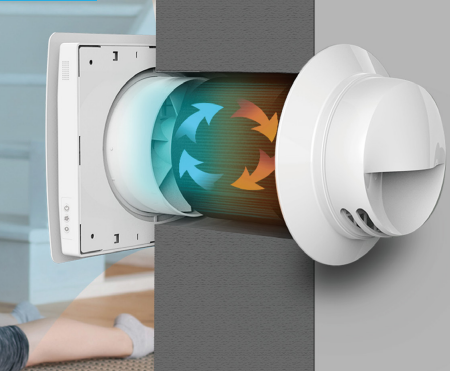HRV vs Other Ventilation Systems: How They Compare
The All-Inclusive Guide to the Uses of Heat Recovery Ventilation in Modern Structures
Heat Recovery Ventilation (HRV) systems represent a significant innovation in developing technology (HRV Heat Recovery Ventilation). They give a technique for trading stale interior air with fresh outdoor air while decreasing power loss. This technique not only improves interior air high quality yet likewise adds to energy effectiveness in both domestic and industrial structures. Understanding the numerous applications and benefits of HRV can expose its critical function in modern style and sustainability initiatives. The implications of this innovation deserve exploring additionally
Recognizing Heat Recovery Ventilation Solutions

Although several modern buildings focus on power effectiveness, recognizing heat healing air flow (HRV) systems is vital for optimizing indoor air quality and decreasing power consumption. HRV systems function by transferring heat from stale indoor air to incoming fresh air, successfully maintaining comfortable interior temperatures while reducing power loss. These systems contain a heat exchanger, followers, and ductwork that promote the blood circulation of air. Throughout winter season, HRV units capture and reuse warmth from the outgoing air, while in summertime, they can aid cool inbound air. By continuously exchanging air, HRV systems also decrease moisture and the concentration of interior contaminants. Appropriate installation and upkeep of HRV systems are vital for their efficiency and performance in boosting total structure performance and comfort.
Advantages of Heat Recovery Ventilation
Heat recovery ventilation systems supply many benefits that enhance both energy efficiency and indoor air high quality in modern buildings. By recording and recycling energy from exhaust air, these systems greatly lower home heating and cooling costs, leading to reduced power usage. They maintain a constant flow of fresh outdoor air, lessening the risk of interior air pollutants and irritants. This continuous exchange aids control moisture levels, preventing mold and mildew growth and making sure a healthier living setting. Additionally, HRV systems add to sustainability goals by lowering overall carbon impacts. Their ability to enhance ventilation without compromising thermal convenience makes them an important enhancement to modern building layout, promoting both economic and eco-friendly benefits.
Applications of HRV in Residential Buildings
As homeowners progressively focus on power efficiency and interior air top quality, the applications of heat healing air flow (HRV) systems in residential buildings have actually come to be much more common. HRV systems are specifically valuable in firmly secured homes, where keeping fresh air circulation is vital for protecting against moisture accumulation and indoor contaminants. They properly move warm from outgoing stale air to inbound fresh air, decreasing energy costs connected with home heating and cooling. In addition, HRVs can enhance comfort levels by managing moisture and temperature level. They are also adaptable for various residential designs, consisting of single-family homes and multi-unit structures. Generally, integrating HRV systems supports sustainable living techniques while making sure a check out here much healthier interior atmosphere for passengers.
HRV in Business and Commercial Setups
In business and industrial setups, the application of warmth recuperation air flow (HRV) systems has come to be progressively important for optimizing energy effectiveness and preserving air quality. These systems effectively transfer warmth from exhaust air to incoming fresh air, decreasing the demand for added home heating or air conditioning. This not just decreases power prices however you could try here likewise adds to sustainability campaigns. Industries such as production, warehousing, and office structures profit greatly from HRV systems, as they help control temperature and moisture degrees, making sure a comfortable and productive environment. In addition, HRV systems help in eliminating pollutants and excess moisture, boosting indoor air high quality. As policies around air top quality end up being more stringent, the fostering of HRV technology is most likely to expand, making it an essential element of modern-day industrial and commercial infrastructure.
Future Fads in Heat Recovery Ventilation Technology

Often Asked Inquiries
Just How Does Heat Recovery Ventilation Influence Indoor Air Quality?
Heat recovery ventilation significantly boosts interior air top quality by continually trading stagnant interior air with fresh exterior air while recovering energy. This procedure decreases pollutants, maintains perfect humidity levels, and guarantees a healthier atmosphere for residents.
Can HRV Solutions Be Installed in Existing Structures?
HRV systems can without a doubt be set up in existing buildings. Retrofitting may require modifications to ductwork and air flow designs, but it considerably boosts energy efficiency and interior air high quality, making it a viable alternative for older structures.
What Maintenance Is Required for HRV Systems?

Are There Details Climates Where HRV Is A Lot More Efficient?
Heat recovery ventilation systems are particularly reliable in climates with substantial temperature distinctions in between periods. These systems optimize power efficiency by recouping warm from exhaust air, making them perfect for both cool and reasonably cozy atmospheres.
How Do HRV Solutions Affect Energy Expenses?
